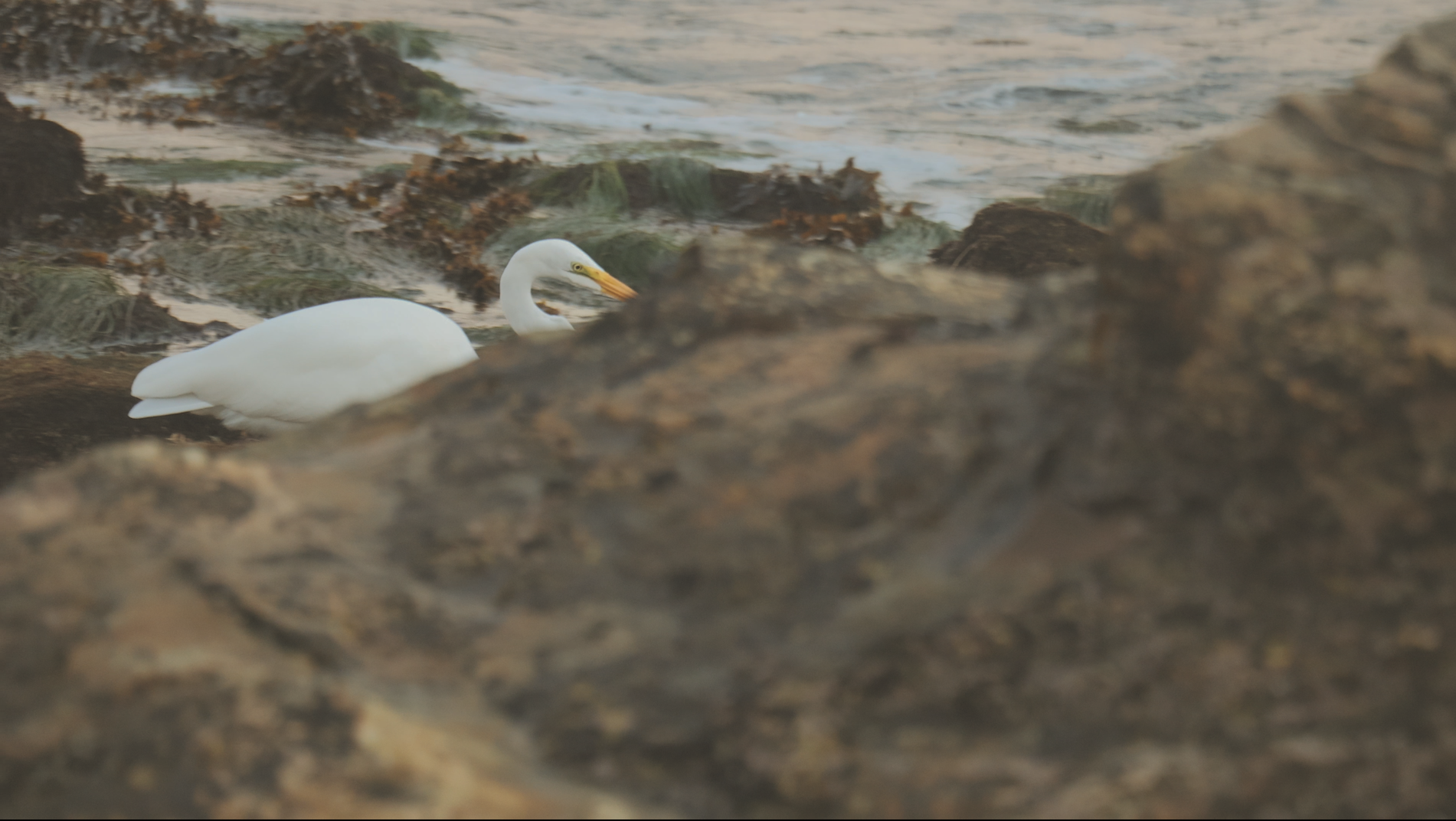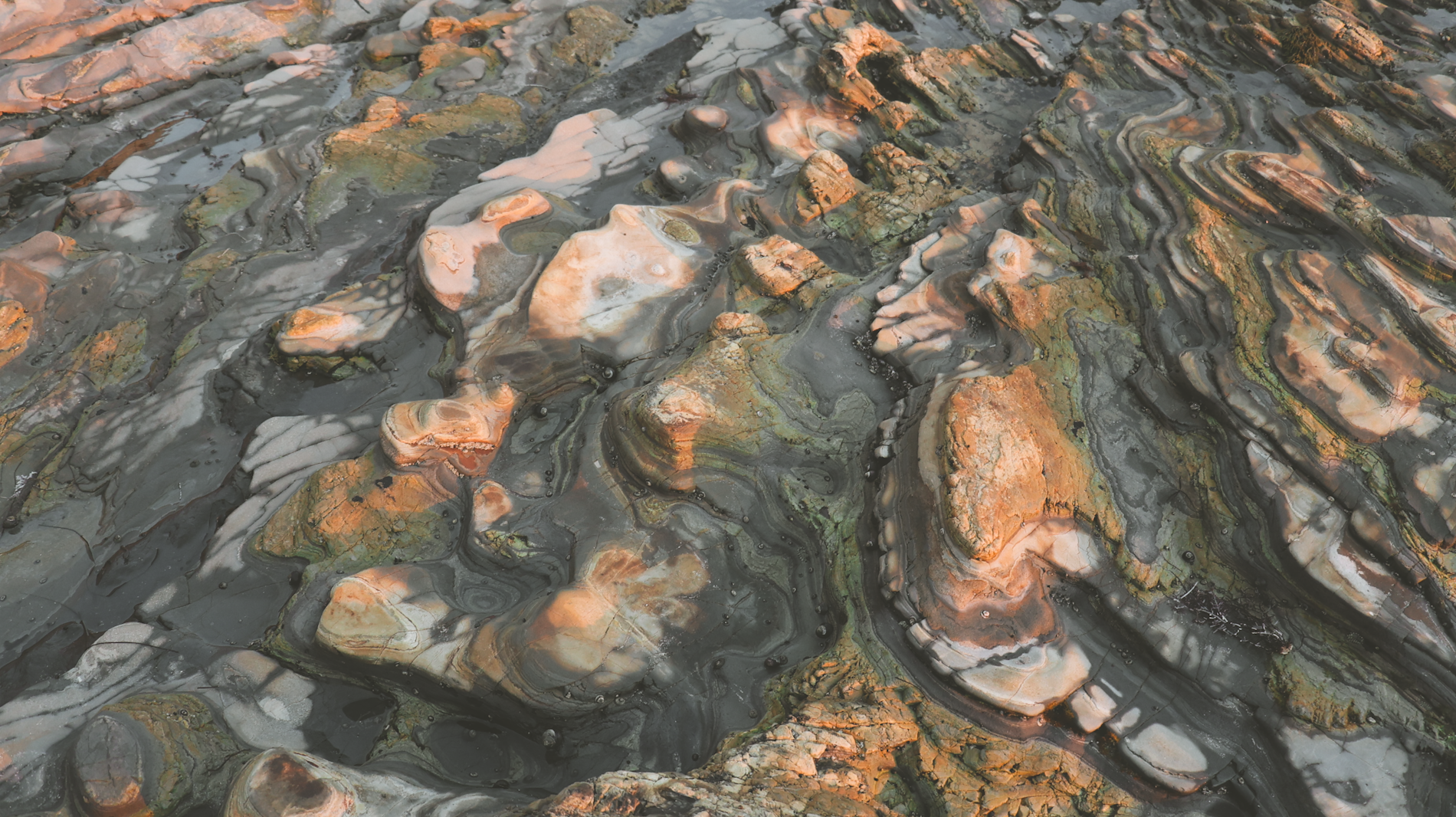Lithic Breathing
Sea caves and pipe organs breathe by apertures opening and closing.
Cut from ancient rock, sea caves are windows into our wild and resonating worlds—the world we inhabit now, and worlds that have come and gone.
They’ve borne witness to our collective past, to the processes that shaped our planet and who we are.
This is a story about sea caves and pipe organs, and the ways that they can expand and entangle our thinking about breathing, listening, resonance and time.
It is a story about the primeval interconnected forces that molded our world.
It is a story that begins millions of years ago, pulling us back to an era of mastodons and megalodons.
What is it like listen to the world through a Miocene-old filter of rock?
What does a sea cave’s memory sound like?
Album Link
Details
In the heart of Los Angeles, California breathes a pipe organ featuring over 4000 pipes.
Just south of the city breathe sea caves carved from ancient rock.
The sea caves in this project are carved from rocks aged between six to eighteen million years old. They are the youngest features of this landscape, eroded by waves out of geological formations that stretch back ever farther into our planet’s past. Embedded within the cliffs are fossils far older.
The rocks that bore these caves have seen the coming and going of all the planets that have ebbed and flowed since then on this spinning rock we call Earth. They’ve witnessed the Holocene, the Pliocene, the Miocene. So many worlds have blossomed and withered during their existence.
These rocks speak to paleoclimatic and paleoceanographic events that occurred long ago during the Miocene epoch. This was an era of oreodonts and mastodons, of the formation of the Sierra Nevadas and the first kelp forests. This was the time of Livyatan melvillei, a prehistoric sperm whale whose namesake comes from the biblical sea monster Leviathan.
Sea cave memory is climate memory. Ancient geological and oceanic forces birthed these caves, and their configuration speaks to those forces. The rocks have borne witness to change, to loss and renewal, time and transmogrification.
Once upon a sea cave, these rocks saw a time when grizzly bears roamed California’s coastline, tunneling through the carcasses of beached whales. They also saw the time of three-toed horses, ancient camels and Smilodons. And they saw the time when megalodons—school bus-long sharks---swam the seas.
Thinking about sea caves brings us into relation with deep time, with a planetary pace. Listening—with bow and wire, with geophone and contact mic—brings us into intimate relation with climate memory.
This short film features documentation of my work with prepared piano, prepared viola, prepared pipe organ, transducers, geophones, experimental lutherie, and performances within sea caves.
The score experiments with resonant space, vibrational architecture, string harmonics, dissonance, pipe organ polyphonies, and seismic rock recordings. Geophones and lithic lutherie open our ears to the resonant signatures of more-than-human architectures, and to the echoes of deep time.
Salvaged brass animals were welded into new amalgamations and used as key weights and sound sculptures.
The score features prepared pipe organ (activated with geophones and contact microphones), prepared viola (activated with sea cave stones, transducers, geophones and contact microphones), field recordings (sea caves activated with bow and wire; geophone recordings of sea caves and coastal environments), and prepared piano (plucked, keyed and activated with sea cave stones, welded key weights, electronics, seaweed, bells, bows, drum mallets, Ebows, geophones and more).
For the field recordings, I recorded the sounds of sea caves being transformed into walk-in cellos via bow and wire. I also worked with geophones to record the sounds of sea cave rocks, and hydrophones to record the sounds of tidal hydraulics. Interwoven are field recordings featuring more-than-humans who build their lives around coastal geologies (ambulating sea stars, roosting cormorants, feeding crabs, an octopi scraping the hydrophone with her radula) as well as more-than-humans from further afield who are nevertheless entangled in a web of global relationships (bats, beetles and more).
Pulling questions about collectivity, resonance, interconnection and attention into relation with one another, the project asks: how can learning the stories of our more-than-human neighbors help us better understand—and reimagine—the stories of our planet?
Can exploring different means of listening, sensing and sounding support radical re-imaginings of potential ecological futurities?
When does the art of careful listening, of paying attention, start to expand our perceptions of the world?
What does it mean to listen deeply in times of climate crisis?
And how can learning the stories of sea caves help us better understand—and reimagine—the stories of our planet and imagine possible futures?
Can listening to sea caves cultivate a sense of lithic empathy? An upwelling of expanded intimacy with deep time?
What can sea caves teach us about sound and memory, degeneration and regeneration, transience and uncertainty, history and geology, listening and care?
Erosion and accumulation?
Growth and decay?
Metamorphosis, decomposition and re-composition of stone and sound?
Past climates?
Sea caves liberate our imaginations from the present moment, allowing us to speculate on what might have been, and what might be. They allow us to fever dream deep into our planet’s mercurial pasts and far forward into potential futurities. We can dream about not just listening to history, but shaping it.
2025
Credits and Gratitude
Bats recorded by Ben Kinsley at Campbient Residency, Manchester State Park, WA 2025.
Audio mastered by Michael Southard.
Organ music performed on the pipe organs at the Immanuel Presbyterian Church in Los Angeles.
Special thanks to Cabrillo Marine Aquarium, Bodega Marine Laboratory and Chapman University, where I recorded sounds made by hagfish, sea urchins, sea stars and more.
Thank you to the Experimental Music + Sound Art Fellowship and the Okada Sculpture & Ceramics Facility at Bemis Center for Contemporary Arts.
The outdoor sound sculpture installations were temporary and left no trace on the environment.



































